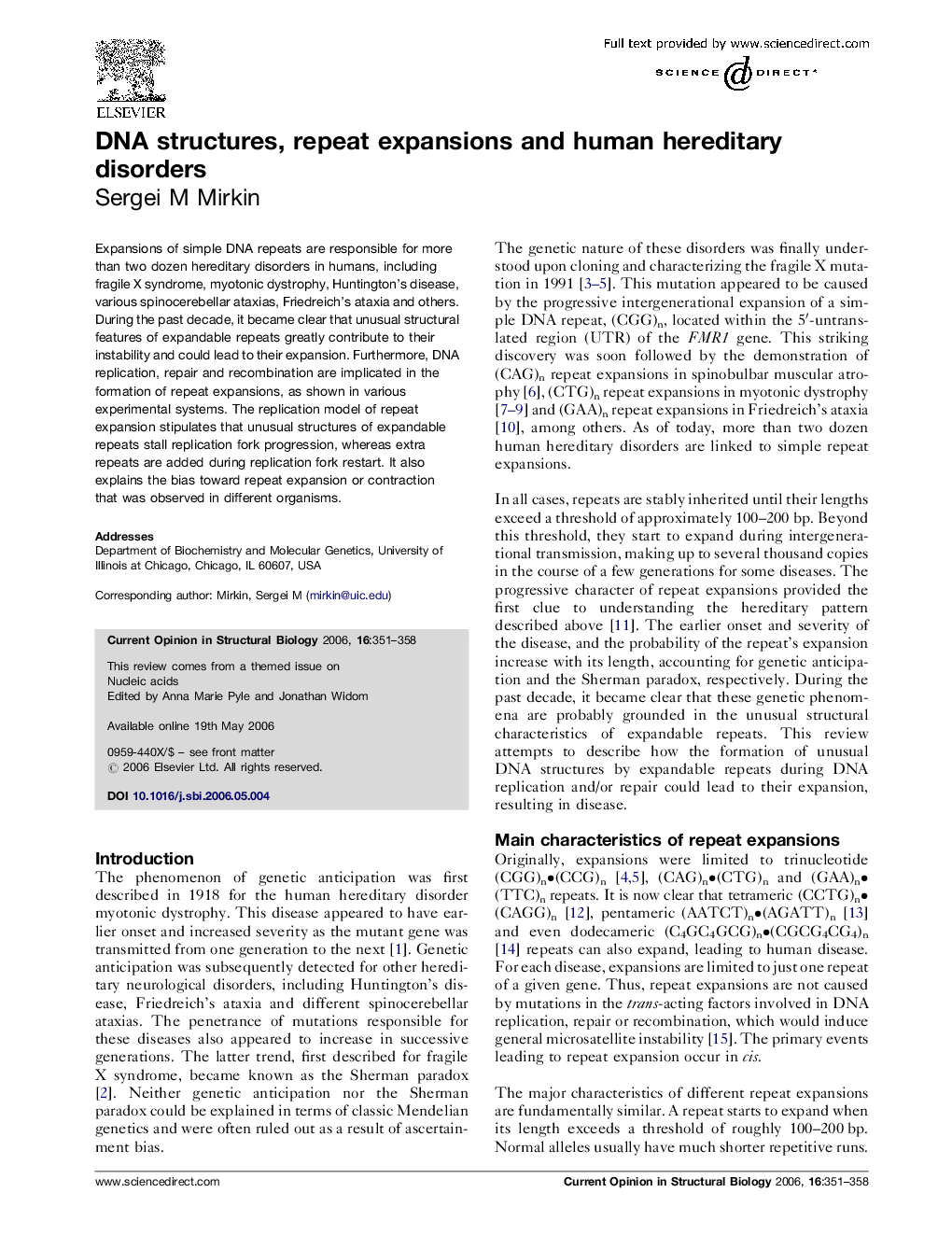| Article ID | Journal | Published Year | Pages | File Type |
|---|---|---|---|---|
| 1979598 | Current Opinion in Structural Biology | 2006 | 8 Pages |
Expansions of simple DNA repeats are responsible for more than two dozen hereditary disorders in humans, including fragile X syndrome, myotonic dystrophy, Huntington's disease, various spinocerebellar ataxias, Friedreich's ataxia and others. During the past decade, it became clear that unusual structural features of expandable repeats greatly contribute to their instability and could lead to their expansion. Furthermore, DNA replication, repair and recombination are implicated in the formation of repeat expansions, as shown in various experimental systems. The replication model of repeat expansion stipulates that unusual structures of expandable repeats stall replication fork progression, whereas extra repeats are added during replication fork restart. It also explains the bias toward repeat expansion or contraction that was observed in different organisms.
